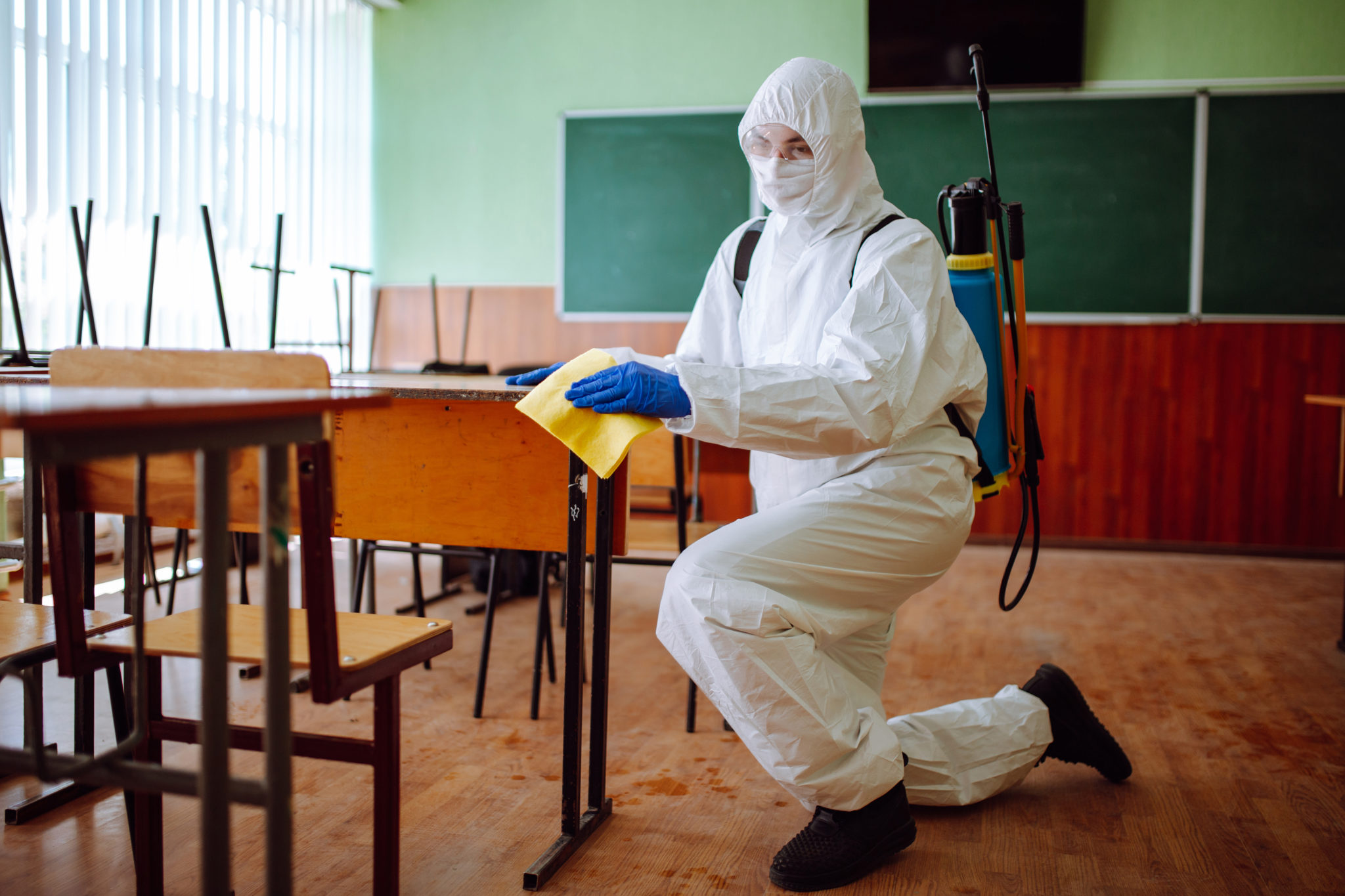Safe & Sanitized Schools: Classroom Cleaning Checklist

Clean and sanitized schools have always been important to students, faculty, and parents, but now more than ever, parents are more concerned about the safety and health of their children amidst the pandemic. Classrooms act as an epicenter for learning but double as a hotspot for germs and bacteria. As educational facilities begin to return to “normal” after two years of online school or hybrid learning, concerns of COVID-19 outbreaks remain. Schools tend to be a hotspot for illness-spreading viruses and bacteria because of the number of people and traffic in smaller, shared spaces. Because of this, classrooms and shared rooms in schools should be cleaned, sanitized, and disinfected regularly to maintain a safe learning environment.
If you are an educator or someone who works in an academic setting, you may find yourself concerned with the cleanliness of your classroom. If this is the case, it may be helpful to not only follow CDC guidelines but to have a classroom cleaning checklist handy to ensure thorough classroom disinfection and classroom hygiene.
Cleaning & Disinfecting
You might be wondering what the difference between cleaning and disinfecting is. The words are often used interchangeably, but both have their own meaning and level of importance when it comes to cleaning your classroom (or any space, for that matter). Here is how the U.S. Centers for Disease Control and Prevention (CDC) defines each category in issues of cleanliness:
- Cleaning reduces the number of germs, dirt, and impurities that may be on surfaces or objects. It works by using soap (or detergent) and water to remove germs from surfaces physically.
- Disinfecting kills or inactivates almost all infectious germs on a surface, including viruses. Disinfecting works best by using chemicals, as directed, on surfaces after they’ve been properly cleaned. (Disinfectants are classified by the EPA as pesticides and must be registered with the EPA).
Due to the size of schools and the level of cleaning and disinfection needed, most educational institutions will utilize a professional commercial cleaning company for larger institutions and a deeper, more thorough clean.
Classroom Cleaning Checklist
It’s essential to clean your classroom correctly using proper disinfectants and avoiding corrosive chemicals or bleach. The National Education Association (NAE) has voiced its concerns about the student safety and the misuse and overuse of disinfectants in schools and institutions of higher education.
According to the NAE website, the Association’s concern is associated with over-reliance on cleaning and disinfection. In fact, they believe that overuse and misuse of products can actually cause illness to students and educators.
When comparing commercial cleaning companies, make sure the company you choose has safe but effective products. Still, many things can be done in-house to help reduce the spread of illness-causing germs and bacteria among faculty and students. Here is a classroom cleaning list to keep your learning environment safe and sanitized:
- Dust hard-to-reach areas such Fans
- Clean & Disinfect high-touch surfaces or shared surfaces such as:
- Desks and chairs
- Keyboards, monitors, and mice
- Door Handles and knobs
- Light switches
- Water fountains
- Pencil Sharpener
- Shared learning materials (books, handouts, etc.)
- Lockers
- Vacuum or mop floors
- Empty trash bins regularly if possible
- Clean and disinfect other shared spaces such as student bathrooms
In addition to items to check off your classroom cleaning list, there are other key points that the CDC points out when it comes to how often a classroom should be cleaned and disinfected. It is critical to disinfect high-touch surfaces at least once a day or in between use by different students.
Even if a commercial cleaning company is hired, It is recommended that educators help to maintain a clean and safe classroom environment in-between cleans. Here are some excellent examples of when disinfection should take place:
- In the morning, before students arrive
- Between classes
- After the use of shared surfaces or objects
- Before and after lunch (or any food service)
- After students are dismissed for the day
A Healthy Learning Environment
A clean educational facility promotes productivity and a healthy learning environment. Dirty classrooms can be a distraction to students and educators, not to mention they can contribute to the spread of germs, bacteria, and viruses. Following this classroom cleaning checklist may help increase the overall safety and cleanliness of classrooms.
If you need a commercial cleaning solution for your classroom or educational facility, consider the professionals at The Coverall Program. The Coverall Program uses methods that are different from average school and daycare cleaning companies. Not only will they provide a healthier cleaning service to the learning environment, but Coverall can help to educate students, faculty, and parents on reducing the spread of illness-causing germs or bacteria through effective educational facility cleaning.

